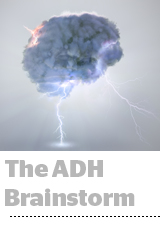 Major brands and global holding companies are preparing for a world without the Google ad ID.
Major brands and global holding companies are preparing for a world without the Google ad ID.
A month before GDPR, Google announced that in Europe it would no longer distribute the Google ID, an identifier attached to its ad server log files used to measure campaigns across the web.
Any measurement of Google audiences in Europe – and eventually everywhere – must now run through Ads Data Hub, Google’s cloud-based data warehousing product.
Ad buyers are wrestling with the options: to dive deeper into the Google system by using Ads Data Hub or to try to find alternatives.
What won’t work anymore?
While the Google ID could never target Google audiences directly, brands could extract it to measure campaigns.
“With Google’s change to its user IDs, a big portion of advanced analytics becomes unviable,” said Laurence Heinrichs, Dentsu Aegis Network’s global attribution director.
Thorough consumer journey mapping becomes untenable without Google impressions, she said. And agencies use the Google ID to trace conversions back across campaigns to optimize based on metrics like media quality or likelihood to purchase.
Some European businesses in ecommerce, automotive and insurance have already had to add new attribution and analytics vendors after losing the Google ID, said Daniel Chapman, Havas’ managing director of products and solutions.
“Brands that live and die on attribution modeling don’t have the time to wait until Ads Data Hub is up and running,” he said.
What are the workarounds?
Replacing the Google ad server is the most obvious tech workaround. Certainly ad servers competitive with Google are aware of this and hope to poach longtime Google clients.
But switching ad servers is expensive and brings all live campaigns and analytics to a grinding halt, which brands won’t do just before entering the critical holiday season, said Evan Hanlon, US president of the GroupM internal data service [m]Platform.
In lieu of a full rip and replace, Chapman said ad servers like Flashtalking and Sizmek are offering to inject their tags into a client’s Google ad server, which will collect data in place of the no-longer-viable Google ID.
Chapman added that while this tactic doesn’t revive the Google ID, it provides a cohesive set of analytics without going through Ads Data Hub.
It could also ease an eventual ad server switch if clients do decide to move off of Google.
GroupM’s Hanlon said at the end of the year, as media plans reset and Google policy changes roll out, brands will review their ad tech and either double down on Google or move to independent providers.
The wait-and-see approach doesn’t work so well in Europe, though, where the policy is live.
Dentsu is running an RFP process in response to the Google ID redaction in Europe. Its goal is to make sure it can sustainably collect log-file level data, which it can’t do without Google IDs.
The holding company evaluated 14 vendors for ad serving, DMP tech and measurement and verification and plans to package a few of those solutions with Dentsu’s Amnet DMP and Merkle M1 data onboarding product to regain attribution coverage, Dentsu’s Heinrichs said.
Workaround … or work-through?
But even as Dentsu assesses vendors to replace Google, it’s still working with Ads Data Hub by bringing its own data and services into it, Heinrichs said.
And some marketers believe there’s considerable merit working with Ads Data Hub, even though it ties them closer to Google.
Bayer was initially concerned about sharing data with Ads Data Hub and the loss of its programmatic ID footprint, said Jeff Rasp, the pharmaceutical company’s director of digital strategy for US consumer brands.
“Now that we’ve had the opportunity to begin to dig in we are finding that (Ads Data Hub) is actually enabling capabilities we did not have in the past,” Rasp said.
The Google ID may have disappeared outside Ads Data Hub, but within Google’s walls the ID has taken on even more value. For instance, it can now be applied to Google-owned media like YouTube and search, as well as matched to Android mobile device IDs, all of which was previously unavailable because buyers would have been able to identify and retarget Google users.
One brand with outsized search and digital video investments in Google and YouTube said the addition of Google-owned media to the attribution and cross-device identity set was too good an offer to pass on despite “intense squeamishness” about committing to Google as a central data source, according to a data executive subject to an NDA.
“Advertisers will be compelled to make a decision,” GroupM’s Hanlon said. “If you want to extract the most value from Google, you’ll need to go all-in with using their data.”
This post was syndicated from Ad Exchanger.


More Stories
News Insiders Pick 2024’s Most Historic Moments: ‘The Year of Trump’
Agencies Need Teams, Not Departments
10 Ads That Struck a Cultural Nerve in 2024